So far in this “Wild Theories” series, we’ve covered about 8 points that we believe might be pertinent to discuss as it pertains to DMT & Gamma Wave formation. In Part 1, we looked at the perceived “subconscious to superconscious” coupling of slow and fast waves, the electrical current direction of the brain affecting the body, the apparent coherence of brain hemispheres & it’s implications, and how much of this ties into the “mystical” healing properties of reported spiritual “gurus”. In Part 2 we speculated regarding precise neural correlates within the body, the proposed engineering of “spontaneous, miraculous” healing, and even touched upon the man known as “The Sleeping Prophet” Edgar Cayce.
Now it’s time to get a little more wild…
9. Sprouting Buds
This is likely the strangest theory in this series as there will be no direct scientific studies to support any of it. Nevertheless… let us proceed forward.
In virtually every plant or tree I’ve ever come across, there is this thing called a “bud”. It’s officially classified as “an undeveloped or embryonic shoot that normally occurs in the axil of a leaf or at the tip of a stem”. It would appear that the natural progression of a bud is to eventually sprout which leads to even further expansion of the plant via the formation of a flower, fruit, and/or seed(s).

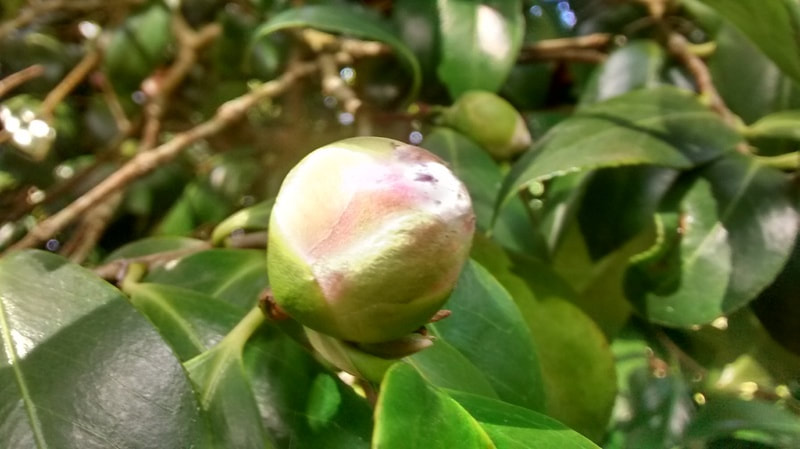
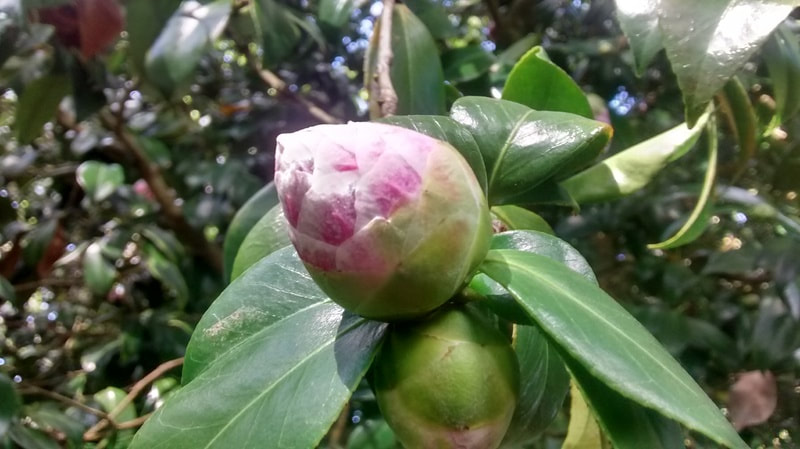
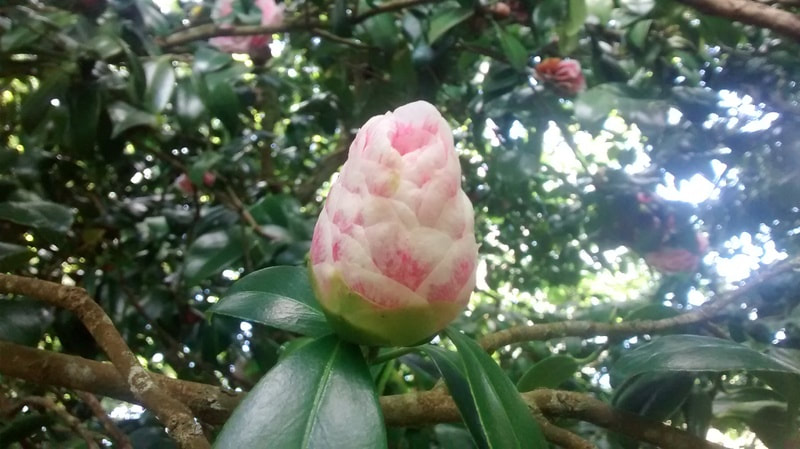


What does this have to do with DMT & Gamma Waves?
Much discussion and speculation regarding the Pineal Gland has been circulated regarding endogenous DMT production. It wasn’t until a 2013 study published in the journal Biomedical Chromatography that it was officially observed that DMT and it’s enzymatic precursors were found in the pineal gland of live rats. In 2015, DMT Quest would interview veteran DMT researcher Dr. Steven Barker regarding this finding and it’s implications.It’s more commonly known that the pineal gland secretes Melatonin. This hormone has largely been attributed to regulating circadian rhythms (although Melatonin appears to have a much more extensive function than merely influencing one’s sleep cycle). A 2001 study published in the journal Endocrinology observed that Melatonin enters the cerebral spinal fluid (CSF) via the Pineal Gland.
(Pineal Gland name derived from resemblance to a Pine Cone)
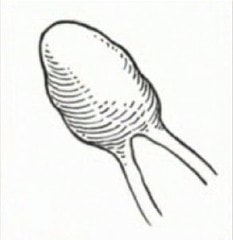
While plants across the world have evolved mechanisms to “sprout” their buds… what does this have to do with humans?
I recall watching a documentary a few years ago that showcased a man in Indonesia who had developed a skin condition so severe that he became known as the “tree man”. In “modern” medical terms this skin condition is labeled “Epidermodysplasia Verruciformis” or “Lewandowsky-Lutz Dysplasia”. It is considered to be a rare autosomal recessive genetic hereditary disorder associated with abnormal susceptibility to the human papillomaviruses (HPVs) of the skin. Unfortunately the man who developed this condition, Dede Koswara, would pass away from complications related to this condition in 2015. While “modern” medical terms labeled his disease as a severe skin condition, it would appear that there is something a little more profound taking place when looking at the images and video of Mr. Koswara.
(I do find it rather amusing that we can label a disease while having absolutely no proper way to address it.)
The reason for bringing this case up is due to the possibility of humans possibly containing recessive genetic components linked to the plant genome. As ridiculous as this might sound, according to a 2010 discussion hosted by the National Human Genome Research Institute, a genetic counseling specialist stated “The truth of the matter is that the basic structure of DNA (ie, double helix) is shared among all living organisms. The code or sequence of DNA (instructions for our cells) is different. Even so, our DNA is likely more similar to plants than different. For example, we share approximately 60% of our DNA with a banana plant.”
(A photo of Dede Koswara)

In 2015, a study at the University of Cambridge showcased the observation of “horizontal gene transfer” which is the transfer of genes between organisms living in the same environment. Here is an excerpt from the study:
Horizontal gene transfer is also thought to play an important role in the evolution of some animals, including nematode worms, which have acquired genes from microorganisms and plants, and some beetles that gained bacterial genes to produce enzymes for digesting coffee berries. However, the idea that horizontal gene transfer occurs in more complex animals, such as humans has been widely debated and contested.“
Lead author Alastair Crisp from the Department of Chemical Engineering and Biotechnology at the University of Cambridge said: “This is the first study to show how widely horizontal gene transfer occurs in animals, including humans, giving rise to tens or hundreds of active ‘foreign’ genes. Surprisingly, far from being a rare occurrence, it appears that this has contributed to the evolution of many, perhaps all, animals and that the process is ongoing. We may need to re-evaluate how we think about evolution.”
In humans, they confirmed 17 previously-reported genes acquired from horizontal gene transfer, and identified 128 additional foreign genes in the human genome that have not previously been reported. A number of genes, including the ABO gene, which determines an individual’s blood group, were also confirmed as having been acquired by vertebrates through horizontal gene transfer. The majority of the genes were related to enzymes involved in metabolism.
Back to the pineal gland sprouting…
I find it interesting that while there seems to be significant genetic overlap among mammalian and plant species, there might be the outside chance that some anatomical similarities might exist as well. The fact that humans share 60% of their DNA with a banana plant would make this theory a bit less preposterous than one might initially think. While it’s hard to imagine the pineal gland opening up and creating tree-like branches within a person’s brain, it might not seem overly ridiculous when considering the manner in which neurons and dendritic branches develop and expand according to electrical amplification (EEG state) within the brain. Interestingly enough… the pineal gland bears some slight resemblance to a plant-like buds sitting atop the spinal column (the plant counterpart being the stem of a plant). While it’d be extremely difficult to verify pineal gland structural changes during activities such as sleep, hypnosis, & meditation (due to the physically invasive nature of doing so), we can make certain semi-educated, yet wild postulations as to what might be transpiring. There has been much evidence showcasing the development of plant growth based on circadian rhythms.
Somehow I believe it’s interesting and possibly pertinent to note the hygromorphic (objects that change shape based on moisture) properties of a pine cone. For those of you that have never observed this before… a pine cone that has fallen from a tree begins to open as moisture dissipates from it. If the pine cone is exposed to water or even elevated humidity, it begins to close.
“Sodium chronobiology has been studied in blood and urine from young, healthy volunteers and was shown to decrease from midnight to early morning [20-22]. Elderly healthy volunteers also had a similar circadian rhythm for blood sodium, though the amplitude of change was reduced compared to younger persons [23]. More frequent sampling in rats demonstrated increasing blood plasma sodium during sleep, with a decrease prior to waking [24]. These results suggest that brain/CSF sodium rhythms are differentially regulated from the systemic circulation.
This series of studies possibly correlate to the “sprouting bud” theory based on the general concept of water/moisture following salt. If sodium fluctuations occur regularly during sleep, and sleep is associated with melatonin release (and likely DMT), it’d appear semi-logical to assume that there is the potentiality for fluid to be dispersed from the pineal gland which causes a hygromorphic reaction much like the pine cone. In Part 1 of “Wild Theories” we cited the 2009 study in the journal Science that showcased DMT’s role in inhibiting voltage-gated sodium ion (Na+) channels. Perhaps DMT release (pineal gland “sprouting”) correlates with greater sodium levels in the brain… something akin to “brain pollen”?
Just some fruit for thought…
10. Twig or a Tree… The Dopamine Feedback Loop
Continuing the discussion of “tree-like” features that might correlate with brain activity and feedback loops…
In the brain, dopamine functions as a neurotransmitter—a chemical released by neurons to send signals to other nerve cells. The brain includes several distinct dopamine pathways, one of which plays a major role in reward-motivated behavior. Most types of reward increase the level of dopamine in the brain, and most addictive drugs increase dopamine neuronal activity.
The mesolimbic pathway (known as the “reward pathway”), is a neural pathway in the brain that transmits dopamine from one region of the brain to another. It is the most significant neural pathway in the brain in which changes occur in all known forms of addiction.
Addiction would seem to develop at many levels.
While we largely attribute the concept of addiction to drug usage (both legal and illegal), it would appear that the mechanisms for addiction can branch out far past externally ingested substances. If we are to comprehend the mechanisms in which dopamine surges occur within the brain in conjunction with how neural pathways develop, we might have a better comprehension as to why meditation, hypnosis, DMT/Ayahuasca, and restful sleep are so effective to combat addictive and/or depressive behavior (both seem to go hand in hand).
In 2014, the journal Dialogues in Clinical Neuroscience published a paper outlining the pathophysiology for depression. The paper proposed the following: “Stress and depression are associated with neuronal atrophy, characterized by loss of synaptic connections in key cortical and limbic brain regions implicated in depression.”
Neuronal atrophy would correlate with a weakened structure of neural pathways developed throughout the brain. If the neural structures and connections developed throughout the brain are lessened, the level of dopamine released would also appear to be suppressed. However, if there is a particular neural pathway that is more developed than the rest, it would make logical sense that a person would consistently tap into that specific pathway in order to maximize their suppressed dopamine surges. This would then lead to what is perceived as “addictive” behavior.
In our 6-part series (Gamma Waves & DMT), we outlined the fact that “Aha!” moments correlated with new neuronal connections being made in accordance with the 40 Hz (Gamma) range of brain activity. In general, one would attribute these moments or frequency with problem solving and creativity. Perhaps instead of focusing on the “negative” addictive or depressive behavior, it’s important to note the amount of activities correlated with problem solving or creativity in a person’s life. It has been observed that as education and occupation becomes more and more specialized, the ability to expand one’s creativity or problem solving capabilities would appear to become narrower. In essence, the predominant time frame a person spends in their waking state tends to become utilized in a narrower neural pathway as time progresses. It should then fail to surprise anyone as to the reason for depression and/or workaholic/addictive behavior due to the inability to expand neural connections outside of the specialized field.
It is also my personal opinion that this is the type of physiology and behavioral feedback loop that leads our society to focus on the intricate detailed mechanisms of something without necessarily tying the details into the whole. While we continue to dive into our specialized fields and attempt to expand these relatively constricted neural pathways branch by branch, we become less cognizant of how our findings tie into the bigger picture due to an imbalanced development of that neural network. This is the type of thinking that might lead to the following imbalanced transpirations that seem rather obviously silly and unintelligent:
Embracing war for an end result of peace.
The development of artificial fertilization methods and excessive pesticide usage for crops while negating the fact that optimally mineral balanced soil negates the need for such tactics.
The development of drugs that address disease via genetic pathway signaling while failing to focus on upstream immune system enhancing protocols and Epigenetic factors.
The financial imbalance found throughout the world.
The grotesque amount of artificial components found in processed foods in order to extend the shelf life and increase manufacturing efficiency.
The incessant usage of electronic devices to the detriment of one’s social life and health.
The ability to label thousands of diseases without providing effective, harmless treatments to address them.
The list could literally go on and on.
I believe that it is not necessarily that people are inherently evil or stupid per say but that their neural pathways have become so specialized and specific that they are literally physically incapable of tapping into a thought that has no developed connection with their established pathway. If the specific pathway has developed on pure technicalities and details with no tie-in to outside qualities such as empathy or sympathy, it would make logical sense why a person’s decisions could seem so “heartless”. The person’s brain would literally be disconnected from any emotional judgement outside of the technicalities. There would be no additional dopamine surge from attempting to make that connection… in fact it might physically distress a person to even attempt to make that connection. The only thing that would create increased dopamine surges and pleasure in the person’s brain would be to delve further and further into the established pathway until they end up with a grotesque abomination like… a Hungry Man’s “meal”, or… 0.1% of the population hoarding the world’s wealth while billions of people live in horrific conditions.
While we carry a belief that as modernized societies, we have utilized scientific methodology to increase efficiency on all fronts based on systematic progression of past ideas, it might behoove us to take a small step back and attempt to tie-in how our specific fields or duties affect the whole.
I’m digressing but at the same time… maybe not so much.
I do believe we are living in a deeply DMT deficient society based on eating too much, breathing too shallow, thinking too small, and stressing too much.
(An example of the neural correlates of addictive behavior… “twigish”)
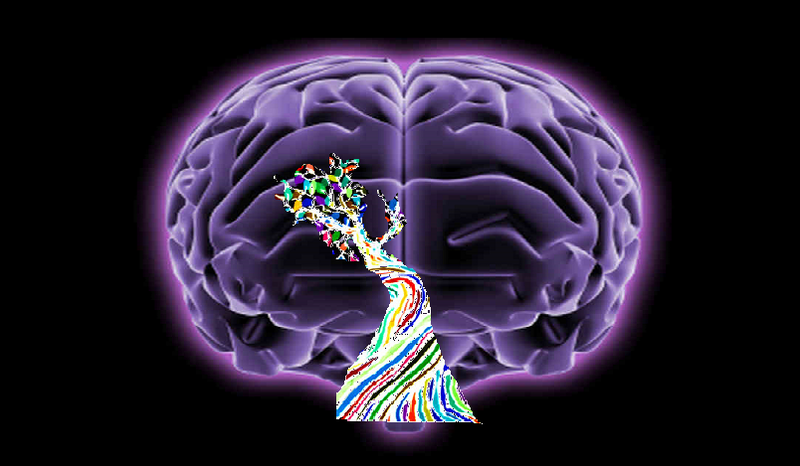
If all or even some of what has been stated is potentially true, it would also make logical sense as to why Ayahuasca/DMT and activities that stimulate endogenous DMT synthesis which lead to greater neural connections synergistically linked with Gamma Waves would alleviate addiction/depression rather quickly. A person’s ability to induce dopamine surges would appear to be magnified during and following these activities.
Anecdotal reports following Ayahuasca/DMT administration seem to follow similar trends in the sense that many people have reported feeling much more “connected” to others. In some cases, people have reported complete changes in demeanor, habits, and routines following their experiences. Perhaps this has to do with realized physical changes in the brain and new connections forming. Some of these aspects are touched upon in a recent 2016 article in the journal Frontiers in Pharmacology.
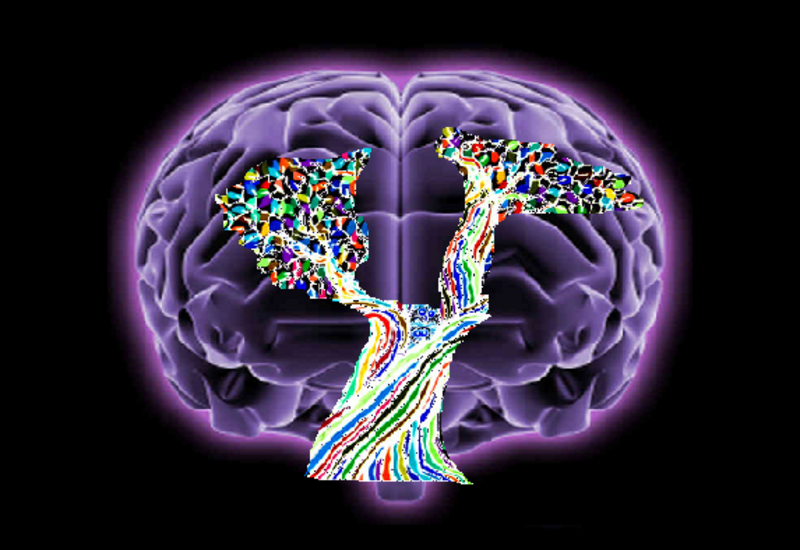
In Part 5 of Gamma Waves & DMT we cited the 2015 study in The Journal of Natural Social Philosophy in regards to the massive changes in brain coherence from baseline to DMT administration. In Part 2 we outlined the huge Gamma wave spikes during meditation from the “Happiest Man in the World” Matthie Richard as well as the effects of meditation on Corpus Callosum development.
Perhaps that is the key to being able to easily induce vast amounts of “feel good” dopamine surges within the brain. Maybe instead of a tiny twig-like neural structure within the brain in which a person incessantly attempts to build upon for pleasure, the person with a robust tree-like structure with vast neural connections only needs to still the mind and engage in a few deep breaths to produce huge dopamine “hits”.
(Maybe a fully connected brain is the “Tree of Life”?)
11. Sun-Gazing
This is considered to be an ancient practice in which a person looks directly at the sun during sunrise or sunset. While this might sound quite strange, interestingly enough during these moments the UV ray index for the sun is extremely low and even zero in certain areas. In essence, the damaging effects from the sun is essentially negated during these moments. While the physiological effects of “Sun Gazing” on the body have not been studied extensively by mainstream science, when comparing the human anatomical properties to that of a plant, it does seem rather intriguing.
The most famous proponent of “Sun Gazing” was a man known as Hira Ratan Manek (HRM). He has stated that the proper method to begin to adopt this practice is by gazing at the sun for only 10 seconds initially (precisely when the sun is setting). HRM then states that you can increase your time “Sun Gazing” by 10 seconds each day until you reach the maximum of of 44 minutes. In the past, HRM has claimed the ability to sustain himself with virtually a minuscule amount of food due to this practice.
Neurologist, George C. Brainard PhD from the Thomas Jefferson University and leading expert on neuroendocrine physiology reportedly observed Manek in 2002. Alongside Brainard was neuroscientist Andrew Newberg who is certified in internal and nuclear medicine. The biggest take away in the study from my perspective was the reported measurement of Manek’s Pineal Gland.
According to a study published in the “American Journal of Neuroradiology”, the average pineal gland size amongst fully matured adults measures approximately 7.4mm in length and 6.9mm in width. According to the study conducted by Newberg and Brainard, Manek’s pineal gland measured 11mm in length and 8mm in width.
DMT Quest has attempted to contact both Dr. Brainard & Dr. Newberg to verify this claim of an enlarged pineal gland in HRM but has received no reply as of this moment. When contemplating the immense importance of melatonin levels in the body for virtually all organs and cells, the implications of this findings would appear to be tremendous. This doesn’t even touch upon the aspects of DMT synthesis from a “super-sized” pineal gland. Much like the sun powers the buds on a plant to sprout… is it that far-fetched to believe that consistent, gentle sunlight could cause a similar sort of effect on the human “bud” known as the pineal gland?One of the predominant effects of Sun Gazing reported by practitioners is a sense of euphoria when partaking in the practice. Perhaps this coincides with the low level DMT administration documented in Dr. Rick Strassman’s trial?
(In a YouTube video named “Sungazing Documentary”, Dr. Fred Travis, the Director of the Center for Brain, Consciousness, and Cognition at Maharishi University of Management would perform an EEG analysis of the film producer while Sun Gazing. He compared the brain activity of the subject looking at a tree vs. looking at the sun. The results showcased greater brain coherence/connectivity when Sun Gazing as well as significantly higher Gamma activity. This footage can be seen here
(It’s mildly interesting that the structures of Hemoglobin and Chlorophyll are rather similar. The fact that acidic conditions cause the release of magnesium from Chlorophyll (leading to the formation of Pheophytin) as well as the release of iron from Hemoglobin makes one wonder… what happens when the reverse environment (alkalinity) is induced?
Bilirubin (also known as Pheophytin) is considered to be the “yellow breakdown product of normal hemoglobin catabolism, caused by the body’s clearance of aged red blood cells”. In 2009 the Journal of American Chemical Society published the first ever finding of Bilirubin in a plant species. In 2014 in the Journal of Cell Science, researchers observed mammalian mitochondria capturing light and synthesizing ATP when mixed with the light-capturing metabolite of Chlorophyll. Perhaps there is more overlap amongst plant and animal species then was first assumed? As crazy as it sounds… maybe someday scientists will find a human who produces Chlorophyll endogenously?)
Maybe the speculations and theories in this part of the “Wild Theories” were a bit much. Comparing the anatomical structures of a mammalian creature with that of a plant? Contemplation of addictive/depressive behavior with that of an underdeveloped, imbalanced tree formation?
Yes, I understand the quantum leaps were are taking in terms of theoretical postulations but what else are we supposed to do with that pine cone-like structure in the middle of our heads?
DMT Quest is a non-profit 501(c)3 dedicated to raising awareness and funds for endogenous DMT Research. This specific field of psychedelic research has been underfunded for many decades now. It’s time to take our understanding of human physiology, abilities, and perception to the next level. E-mail me at jchavez@dmtquest.org with any comments or questions. You can also follow us at Facebook, Instagram, or Twitter.
